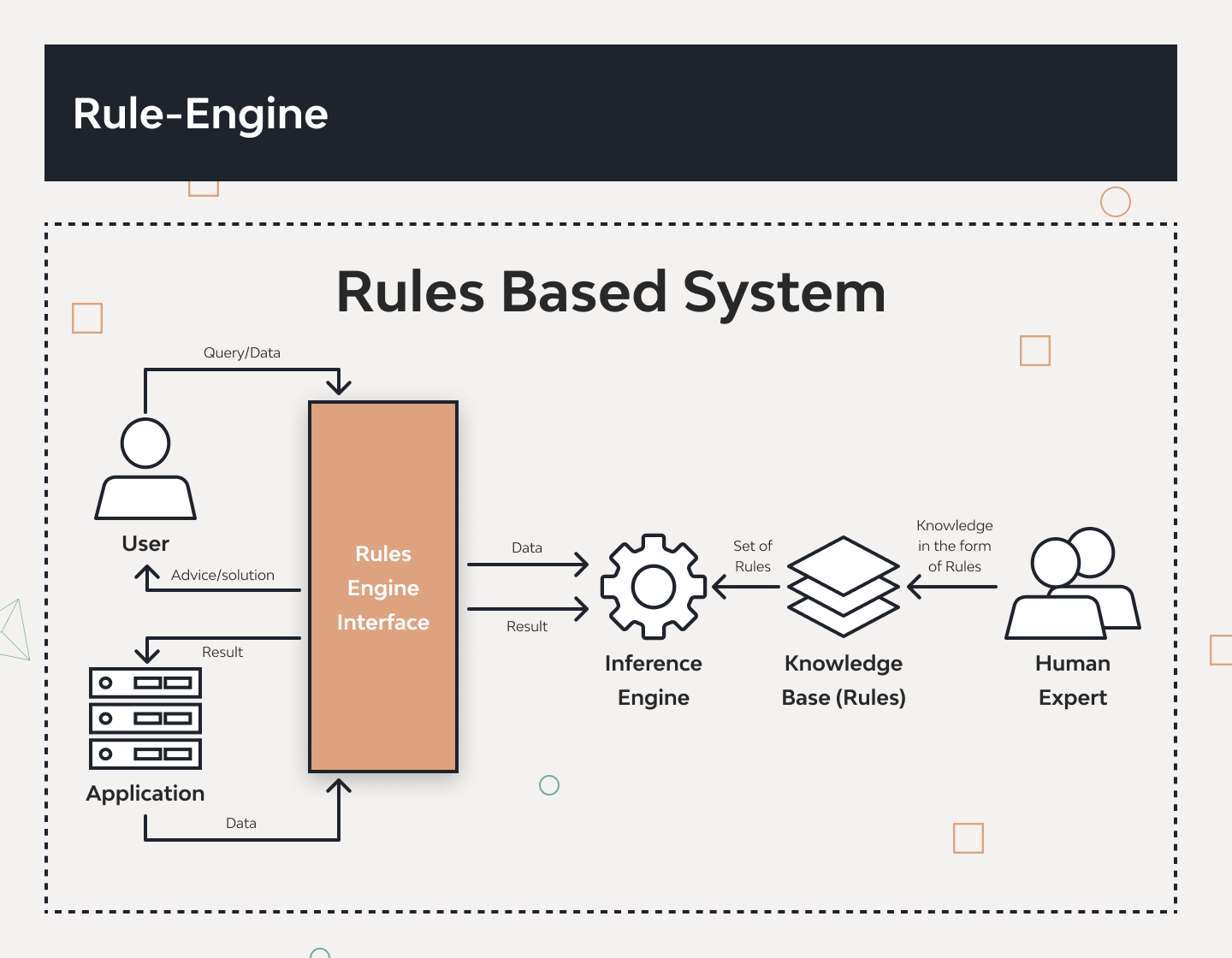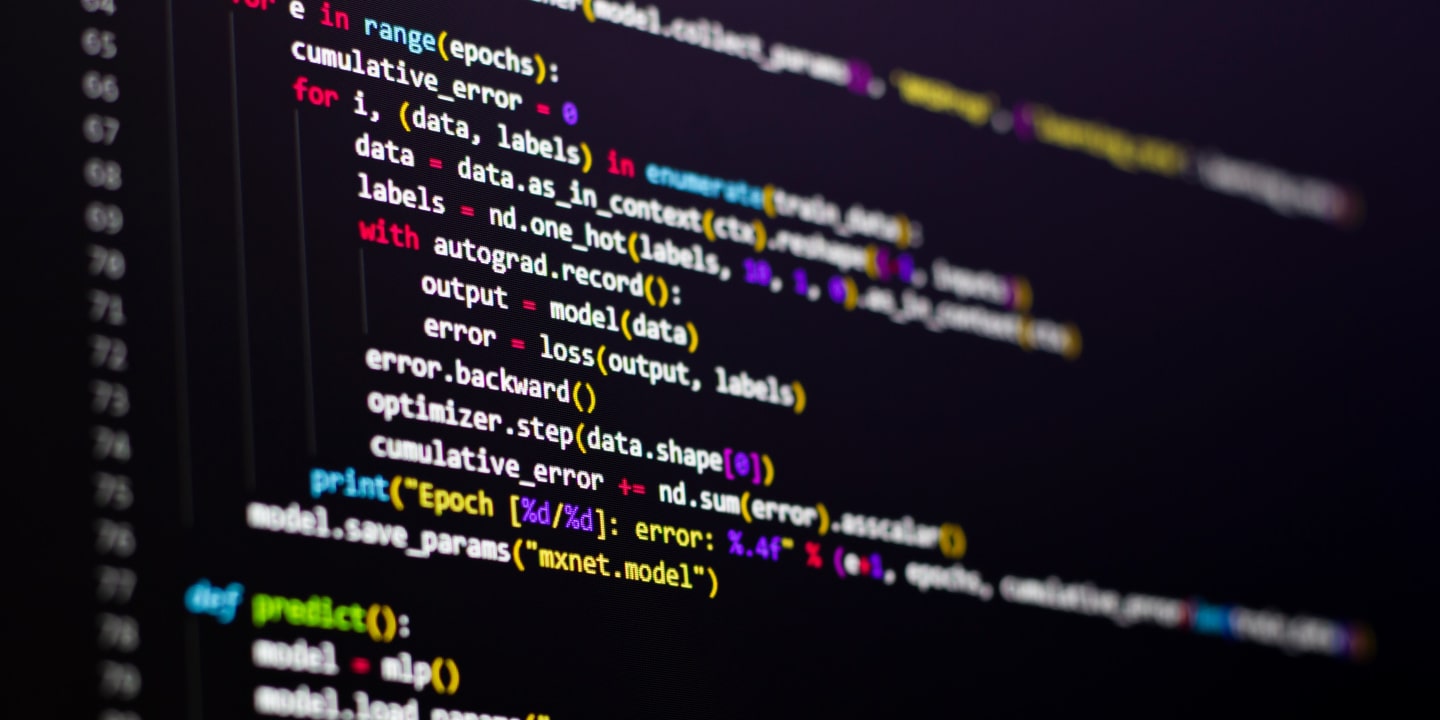Python Rule Engine: Logic Automation & Examples

This article delves into the intricacies of Python rule engines, providing a comprehensive overview of their functionality, libraries, and applications through real-world examples. It aims to clarify the concept for both developers and business analysts, offering insights into choosing the right library and navigating the complexities of implementing rule-based logic in Python projects.
Highlights:
- Python rule engines greatly enhance an application’s ability to implement complex decision-making algorithms that can easily adapt to changing requirements over time.
- The choice of a Python rule engine library can significantly impact the development speed, maintainability, and scalability, underscoring the importance of selecting a library that aligns with the project’s specific needs and complexity.
- Understanding the potential limitations of rule engines, such as complexity, scalability, and performance issues, is crucial. Strategic planning and judicious use can mitigate these challenges.
- The journey of working with rule engines involves taking small steps, starting with simple projects to grasp the basics, and then moving on to more complex tasks. Experimenting and learning play a significant role in mastering rule engines.
Let’s demystify what a Python rule engine is. Simply put, a rule engine is a software system that executes one or more business rules in a runtime production environment. These rules are typically written for business analysts and developers to understand and manage them. In Python, rule engines allow us to define rules that say, “When certain conditions are met, do something.” They’re handy for implementing complex decision-making algorithms that are subject to change over time.
Our exploration of Python rule engines is grounded in over 15 years of experience of the Django Stars team in developing industry-leading projects as a Python development services provider. Specifically, our partnership with Money Park will help elucidate the practical challenges of translating human-readable rules into executable queries, underscoring the necessity for innovative solutions such as pyparsing for successful implementation.
Things You Need to Know About Python Rule Engine
Imagine rules as the backbone of decision-making logic in applications. In Python, rules can be represented in various forms, but most commonly, they’re defined using condition-action pairs. This means if a specific condition is met, an action is triggered.

Libraries like Simple rules, Business rules, or even frameworks like Drools through PyJNIus, allow you to define these rules in a readable and maintainable manner. What’s cool here is the flexibility Python offers. Whether dealing with data validation, business logic, or complex decision trees, there’s a way to model it effectively.
Read Also: How Descriptors in Python Work
Rule Execution and Inference Mechanisms
Rule execution and the inference mechanism are the heartbeats of a rule-based engine Python. They determine how rules are applied and in what order. Most Python rule engines use forward chaining, where the engine starts with the available data and applies rules to infer new data until a goal is reached or no more rules apply.
This approach is great for scenarios where you have a clear set of rules and data automation to work through systematically. Understanding the execution flow is crucial because it affects performance and the accuracy of the outcomes. The complexity of your rules and the engine’s efficiency can make or break your application’s logic processing.
Integration with Python Ecosystem
One of Python’s strengths lies in its ecosystem, which is a vast collection of libraries and frameworks that can virtually handle any task. Integrating rule engines with this ecosystem opens a world of possibilities. For instance, you can use Pandas for data manipulation, NumPy for numerical operations, or SQLAlchemy for table database interactions and seamlessly apply rule-based API logic on top of these operations.
The beauty is in leveraging Python’s simplicity to integrate complex rule-based systems with other components, making your application smarter and more dynamic. However, tread carefully. Integration requires a deep understanding of the rule engine in Python and the external libraries to avoid performance bottlenecks or compatibility issues.
Numerous types of web applications are supported by web frameworks. The most common and best frameworks for app development support the construction of blogs, forums, general-purpose websites, content management systems, etc.
All of these features are common to all frameworks. However, a paradox now appears: a developer has such a wide variety of tools and functions that he/she can simply get lost. That’s why you need to think carefully and create criteria that will make your work comfortable and easier.
— Alex Ryabtsev, Backend Competency & Tech Lead at Django Stars
Complexity and Technical Expertise
Lastly, let’s talk about the elephant in the room – complexity and the level of technical expertise required. Rule engines can simplify decision-making processes by abstracting complex logic into manageable rules.
Yet, designing and maintaining a rule-based system is no small feat. It requires a solid understanding of the domain, the ability to post logic into rules, and the technical skill to implement these rules efficiently in Python. This complexity underscores the importance of deciding to hire Python developers who are well-versed in navigating these challenges.
This doesn’t mean you should shy away from rule engines. Instead, view them as a tool to sharpen your problem-solving and system design skills. Start small, learn by doing, and gradually take on more complex projects as you become more comfortable.
Python Rule Engine Libraries
I’ve spent considerable time exploring these libraries, and I’m thrilled to share my insights and experiences with you. Let’s get right into it!
Python Rule Engine Libraries: Comparative Look
Rule engines are powerful tools for developers, allowing us to model complex logic, decision trees, and business rules in our applications. With its rich ecosystem, Python offers several libraries to make working with rule engines more accessible and efficient.
I’ve compared some of the most popular Python libraries for rule engines based on their features, easy-to-read lines, and how they stand in the current tech landscape. Here’s a detailed comparison to help you choose the right library for your next project:
| Library | Description | Date of most recent update | # of Stars/Forks |
|---|---|---|---|
| CLIPSpy | Designed to model human knowledge or expertise, leveraging the 'C' Language Integrated Production System (CLIPS) developed by NASA. It's considered state-of-the-art with excellent documentation and runtime rule loading. | Feb 18, 2024 | 158 ⭐ / 30 ⑂ |
| Python Knowledge Engine (PyKE) | A logic programming framework with its syntax for creating rules. Supports forward & backward chaining but hasn't been updated in years and is written for Python 2.5+. | Apr 26, 2010 | 76 ⭐ / 34 ⑂ |
| Durable Rules | Focuses on real-time, scalable coordination of events. It combines data from multiple sources for complex inference, supports multiple languages, and uses a C-based RETE implementation for forward chaining. | Sep 7, 2020 | 1106 ⭐ / 208 ⑂ |
| Business Rules | A domain-specific language by Venmo for implementing business intelligence rules. It provides a simple interface for non-coders and expresses rules as JSON. | Mar 18, 2022 | 857 ⭐ / 254 ⑂ |
| Rule-engine | A lightweight expression language for matching arbitrary Python objects. It's great for rules involving strings, floats, datetime, and compound data types. | Jan 15, 2024 | 372 ⭐ / 54 ⑂ |
| PyKnow/Experta | Inspired by CLIPS for building expert systems. It's another powerful tool but might be overkill for simple rule-checking needs. | Sep 28, 2020 | 80 ⭐ / 107 ⑂ |
My Personal Takeaways
- CLIPSpy: It’s robust and versatile, ideal for complex projects where modeling human expertise is crucial. However, the syntax can be daunting for beginners.
- PyKE: Its lack of recent updates and dependency on an outdated Python version makes it a less appealing choice for modern projects.
- Durable Rules: This library is my top pick for projects requiring scalability and multi-language support. Its syntax is intuitive, making it accessible for developers of varying skill levels.
- Business Rules: Perfect for projects aiming to democratize rule creation, especially in non-technical teams. However, the Python business rule engine’s scalability and performance in large-scale applications are points to consider.
- Rule-engine: It stands out for its simplicity and versatility in handling data types. The debug REPL is a boon for troubleshooting and development.
- PyKnow/Experta: Offers a solid foundation for building expert systems, though it might be more than what’s needed for simpler applications. The learning curve is steeper due to its documentation.
Possible Limitations of a Rule Engine
Let’s dive into some nuances and limitations you might not find in the glossy brochures.
Complexity and Scalability Concerns
First off, the best rule engines for Python are fantastic… until they’re not. As your application grows and the number of rules scales up, maintaining and understanding this complex web of logic can become a Herculean task.
I’ve seen rule sets that start off manageable. But as business requirements evolve, they morph into an almost sentient labyrinth of conditions. This complexity makes it harder for new developers to get up to speed and can also introduce subtle bugs that are a nightmare to debug.
Performance Hits
Performance is another area where rule engines can catch you off-guard. Initially, the impact might be negligible, but the performance can take a significant hit as you add more rules and the decision tree deepens.
Imagine a scenario where each transaction must go through hundreds of rules before making a decision. Now scale that to thousands of transactions per minute. I’ve been there, and let me tell you, the performance degradation can be real, leading to longer response times and a less-than-stellar user experience.
Over-Reliance on Rule Engines
There’s a temptation to put too much logic into the rule engine, making it the de facto decision-maker for the application. This over-reliance can lead to scenarios where business logic is scattered between the application code and the rule engine, making it difficult to loan a holistic view of the logic flow.
I’ve witnessed projects where the community spends more time deciphering rule logic than writing new features. It’s good to use rule engines judiciously and keep them focused on truly dynamic decision-making scenarios.
Difficulty in Testing and Debugging
Testing and debugging rule-based systems can be particularly challenging. Unlike traditional imperative programming, where the execution flow is linear and somewhat predictable, rule engines operate on a different paradigm. Determining which rule fired and why (or why not) requires a deep understanding of the rule engine’s inference mechanism. Automated testing helps, but crafting those tests to cover many possible rule combinations is no small feat.
Integration Challenges
Integrating a rule engine into your infrastructure can be smooth sailing or like fitting a square peg into a round hole. Depending on the rule engine you choose, you might face compatibility issues with your current tech stack, data serialization/deserialization headaches, or even figuring out the best way to trigger rule evaluations. My advice? Prototype early and ensure your Python rule engine rule engine Python example choice plays nicely with your existing architecture.
Use Cases and Examples of Python Rule Engine
I’m going to share with you some use cases and Python rule engine examples that I’ve encountered in my work.
1. E-commerce Pricing Strategies
In the e-commerce domain, pricing strategies can be quite dynamic, changing based on inventory levels, competitor pricing, and demand. A Python rule engine can automate these adjustments when using Python for web development. For example, you might have a rule that says, “If the inventory level of product X drops below ten units, increase the price by 5%.”
from durable.lang import rule, when_all, assert_fact, retract_fact
with rule('increase_price'):
when_all((m.inventory < 10) & (m.product == 'X'))
def action(c):
# Assuming we have a function to update the price
update_price(c.m.product, increase_by=0.05)
print(f"Increased price for {c.m.product}")2. Fraud Detection in Financial Transactions
Another rule engine Python example comes from fraud detection systems that often rely on complex, frequently updated rules to flag potentially fraudulent transactions. A rule might look like, “If a user’s transaction amount exceeds their average transaction amount by 300% within a 24-hour period, flag as potential fraud.”
from durable.lang import rule, when_all, assert_fact, retract_fact
with rule('detect_fraud'):
when_all((m.amount > (m.avg_amount * 3)) & (m.time_diff < 24))
def action(c):
flag_transaction_as_fraud(c.m.transaction_id)
print(f"Transaction {c.m.transaction_id} flagged as potential fraud.")3. Automated Customer Support
Customer support can be streamlined using rule engines, where common issues are automatically identified and resolved without human intervention. A rule could be, “If a customer’s order status query comes in and the order was shipped more than ten days ago, automatically send tracking details.”
from durable.lang import rule, when_all, c
with rule('send_tracking_info'):
when_all(m.query == 'order_status')
def action(c):
if order_shipped_days_ago(c.m.order_id) > 10:
send_tracking_details(c.m.customer_id, c.m.order_id)
print(f"Sent tracking info for order {c.m.order_id} to customer {c.m.customer_id}")These Python rule engine examples barely scratch the surface of what’s possible with Python rule engines.
The Django Stars’ Experience in Python Rule Engine
Now I’m going to share a slice of our journey at Django Stars, particularly how we tackled a fascinating challenge that many of you might find intriguing. We were approached by Money Park, Switzerland’s largest online mortgage broker, to develop a solution that would allow managers to configure objects affected by automatic actions within their platform.
These actions could range from sending emails to users to creating notification messages and performing other tasks. These configurations needed to be defined through human-readable rules that could be dynamically translated into Django ORM queries. Sounds like a puzzle, right? Well, it was, and here’s how we solved it.
The Challenge: Making Sense of Human-Readable Rules
Our goal was ambitious yet clear. We needed a mechanism to interpret rules like (status = “processing”) and (order_type = “product_a”) or (first_name=”John”) into queries that Django’s ORM could understand and execute. This requirement was pivotal for Money Park’s intermediary platform, which aimed to streamline mortgage, investment, and retirement planning services.
Enter Pyparsing
To bridge the gap between human-readable rules and ORM queries, we turned to pyparsing, a powerful library for parsing and interpreting complex grammar. Let’s look at how we leveraged pyparsing to dissect and reconstruct these rules.
from pyparsing import *
import operator
from django.db.models import QWe defined operators and literals to represent the components of our rules:
equals = Literal("=").set_results_name('exp').set_parse_action(
lambda s, l, t: '__exact')
and_logical_operator = Literal("and").set_results_name('op').set_parse_action(
lambda s, l, t: operator.and_)
or_logical_operator = Literal("or").set_results_name('op').set_parse_action(
lambda s, l, t: operator.or_)This setup allowed us to interpret the equals sign as Django’s __exact lookup and logical operators and, or as Python’s operator.and_, operator.or_, respectively.
Next, we defined valid literals and their corresponding Django model fields, ensuring our rules could be directly mapped to the database schema.
formula_literals = {
"first_name": "user__first_name",
"status": "status",
"order_type": "order_type",
}With our literals and operators defined, we pieced together the grammar for our rule engine:
expression = Forward()
exp_group = Group(
literals_ + equals + QuotedString(quote_char='"')
)
expression << Group(
lparen + (exp_group | expression) + rparen
+ ZeroOrMore(Group(Or([and_logical_operator, or_logical_operator]) + expression))
)Parsing Rules into Django ORM Queries
Our parser could now understand rules, but we needed to convert these parsed rules into something Django’s ORM could execute. Here’s a glimpse into how we achieved that:
def convert_to_Q_object(parsed_rule, literals):
# Recursive function to convert parsed rules to Q objects.
# Detailed logic omitted for brevity.This function was the cornerstone of our solution, transforming parsed rules into Q objects that Django’s ORM could use to filter models.
Putting It All Together
With our rule engine in place, we could now dynamically generate queries based on manager-defined rules. This functionality was instrumental in developing Money Park’s platform, enabling them to offer personalized advice and find the best deals for their clients.
The Output
The project with Money Park was a resounding success. We delivered a fully functional MVP for the online mortgage broker platform, meeting our core objectives and enabling Money Park to maintain its development pace. Our work covered the rule engine, extensive testing, and quality assurance, ensuring the platform’s reliability and effectiveness.
Lessons Learned
This project taught us the importance of flexibility in software development. By using pyparsing to interpret human-readable rules, we created a dynamic system that could adapt to changing business requirements without requiring a complete overhaul. It’s a testament to the power of Python and Django’s versatility in solving complex problems.
Final Thoughts
This project is a prime Python rule engine example of how understanding the fundamentals can enable you to tackle sophisticated challenges. Ultimately, our experience with Money Park and the rule engine Python project was more than just a technical achievement. It was a journey of innovation, problem-solving, and teamwork. And these journeys make software development such an exciting field to be a part of.
Conclusion
Rule engines have their place in the developer’s toolkit. They offer flexibility and dynamic decision-making capabilities that are hard to match. However, like any powerful tool, they come with their own set of challenges.
Choosing the right Python rule engine library can significantly impact your project’s development speed and maintainability. It’s essential to consider your project’s specific needs, the complexity of the rules you intend to model, and the library’s learning curve.
My journey with rule engines has been a rollercoaster of love and frustration. Still, by being aware of their limitations and planning accordingly, you can harness their power without getting ensnared in their complexities.
The beauty of using a rule engine is its flexibility and the ease with which rules can be added, modified, or removed to adapt to changing business requirements. As you dive into implementing rule engines in your projects, remember that the goal is to make complex decision-making more manageable and maintainable.
Start small, experiment, and gradually build your understanding and application of rule engines. They can be a game-changer in the right scenarios, providing clarity and efficiency to convoluted logic. Happy coding!
- Are there any performance considerations when using rule engines in Python?
- Absolutely, and it's crucial to get a handle on this early on. By their nature, rule engines can be both a blessing and a curse. They allow you to abstract complex logic into a more manageable, declarative format. However, this abstraction comes with a cost. The performance hit mainly revolves around the complexity of your rules and how efficiently the rule engine evaluates them. Some engines are optimized for speed, while others offer greater flexibility at the cost of performance.
- Are Python rule engines suitable for real-time decision-making scenarios?
- The short answer is yes but with caveats. Real-time decision-making demands lightning-fast responses. Not all rule engines are up to the task. If your application requires real-time processing, look for rule engines designed with performance in mind. Some engines are better suited for batch processing or scenarios where decisions can afford a slight delay.
- Can rule engines be integrated with machine learning algorithms in Python?
- Yes, and this is where things get really exciting! Integrating rule engines with machine learning (ML) can lead to powerful synergies. Rule engines can handle explicit, deterministic logic, while ML models excel at learning patterns and making predictions based on data. This combination allows you to create systems that are both intelligent and interpretable.
- What are some best practices for management complexity in Python rule engines?
- Managing complexity is key to maintaining performance and ensuring your rule-based system remains maintainable. Here are some tips:
- Modularize your rules. Break down complex rules into smaller, more manageable pieces. This not only improves readability but also makes debugging easier.
- Use rule groups. Organize related rules into groups or modules. This helps in managing dependencies and enhances the clarity of your rule logic.
- Employ a version control system. Just like your code, your rules should be versioned. This allows you to track changes and roll back if necessary.
- Test thoroughly. Rule engines add an extra layer of logic to your application. Comprehensive testing is essential to ensure this logic behaves as expected under various scenarios.











